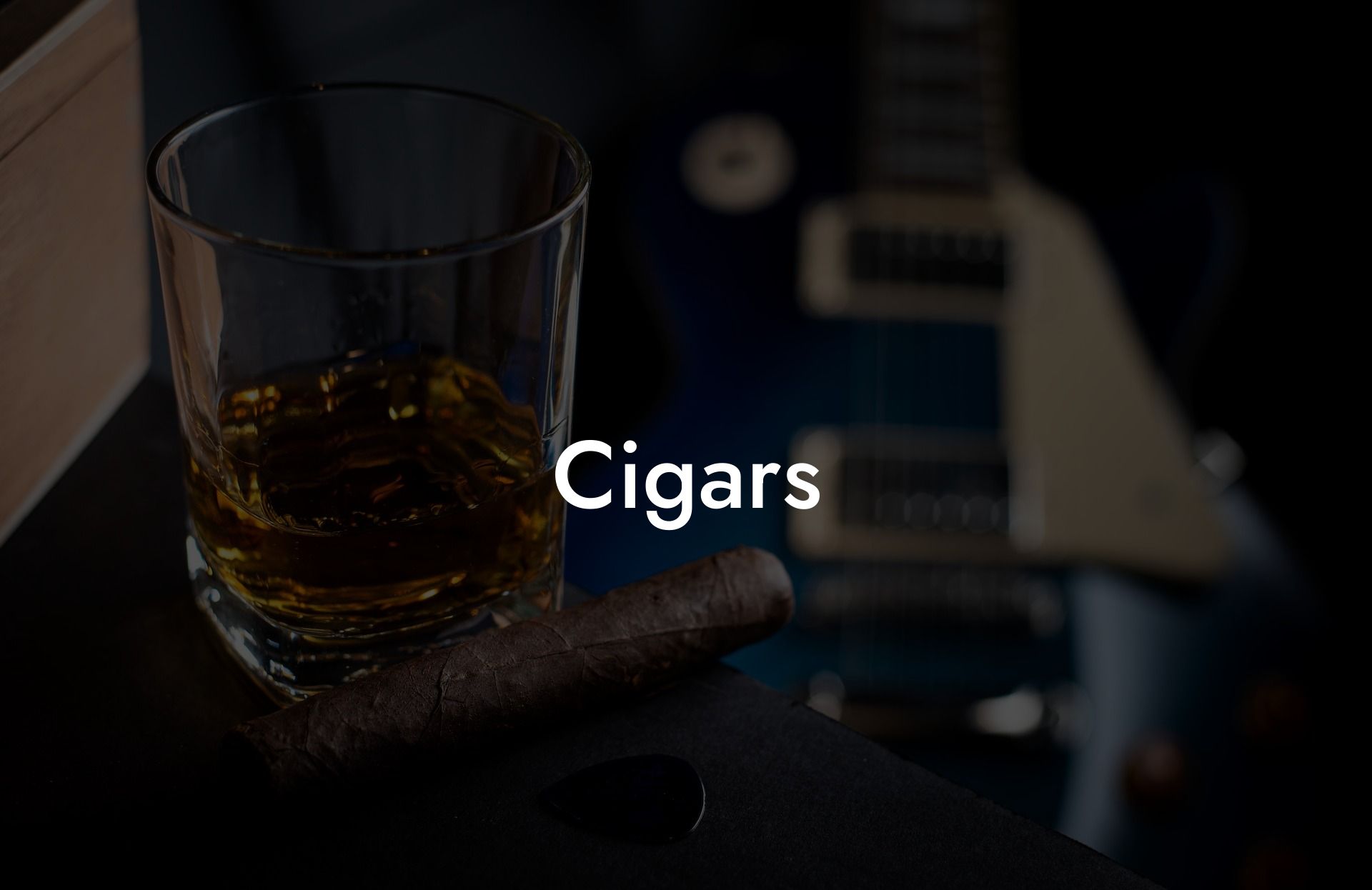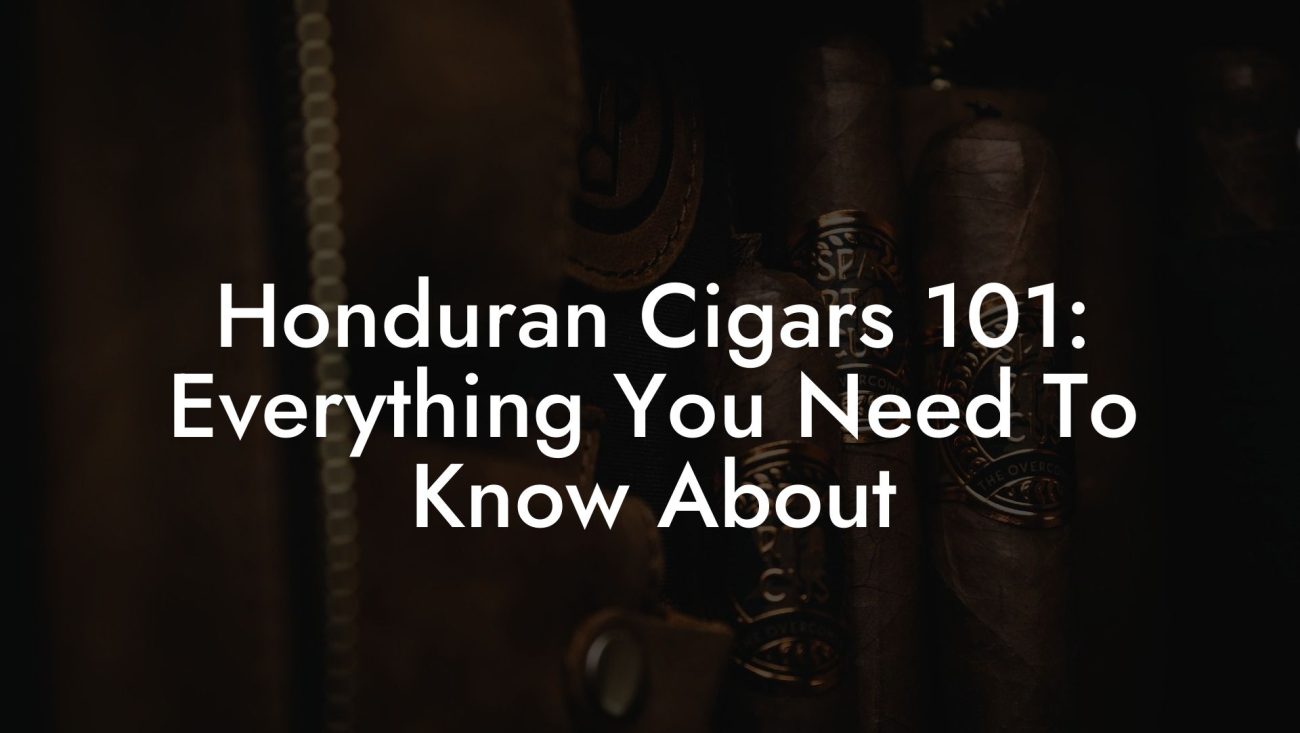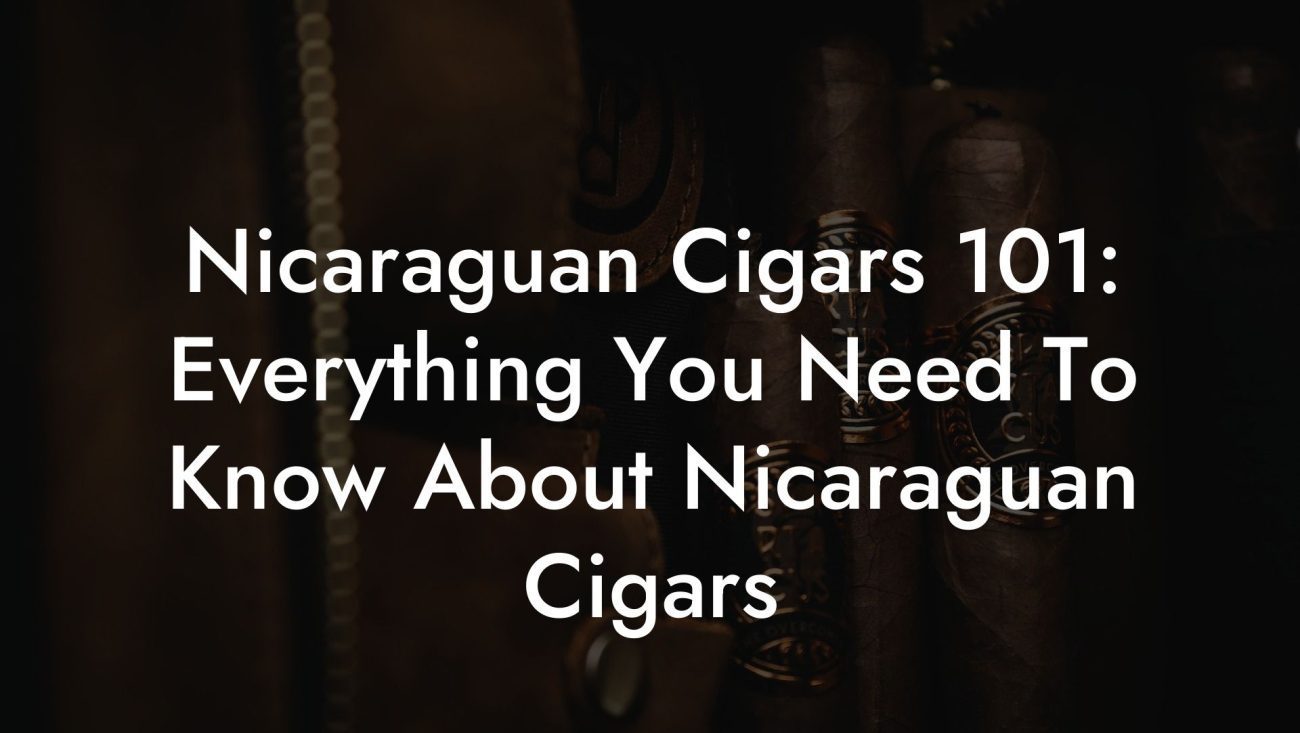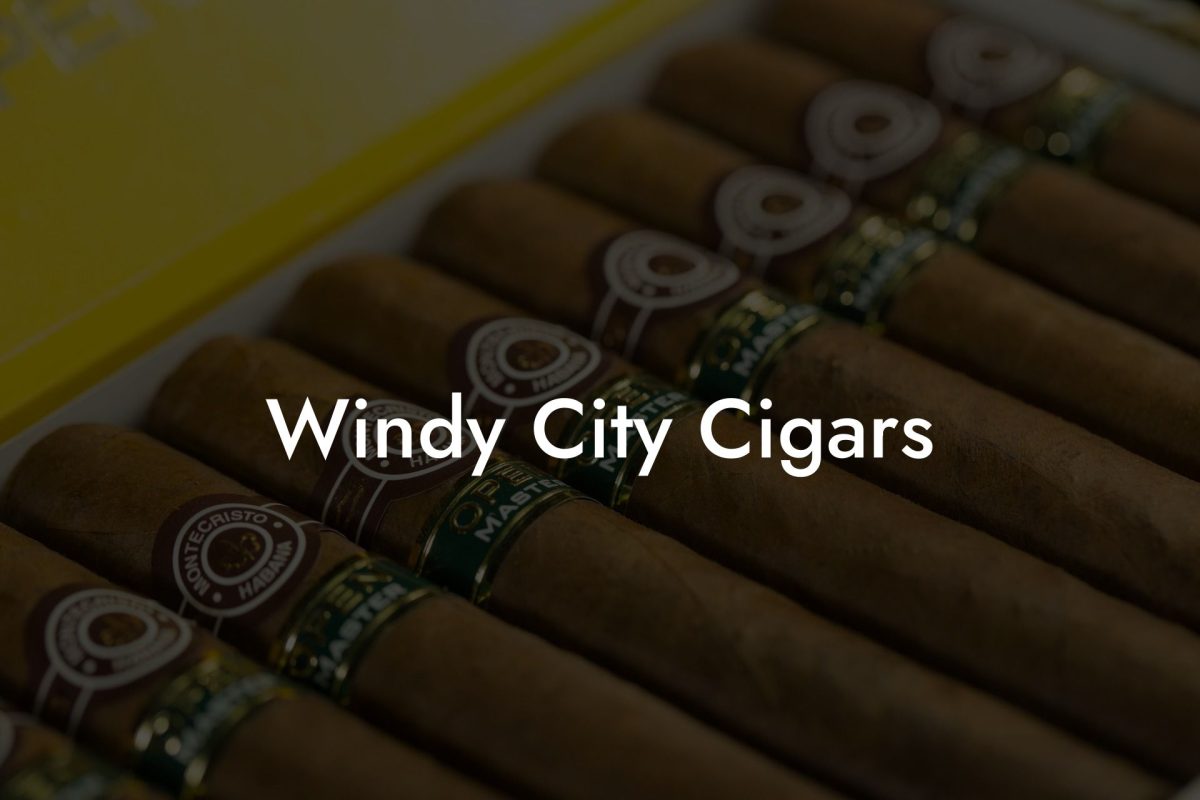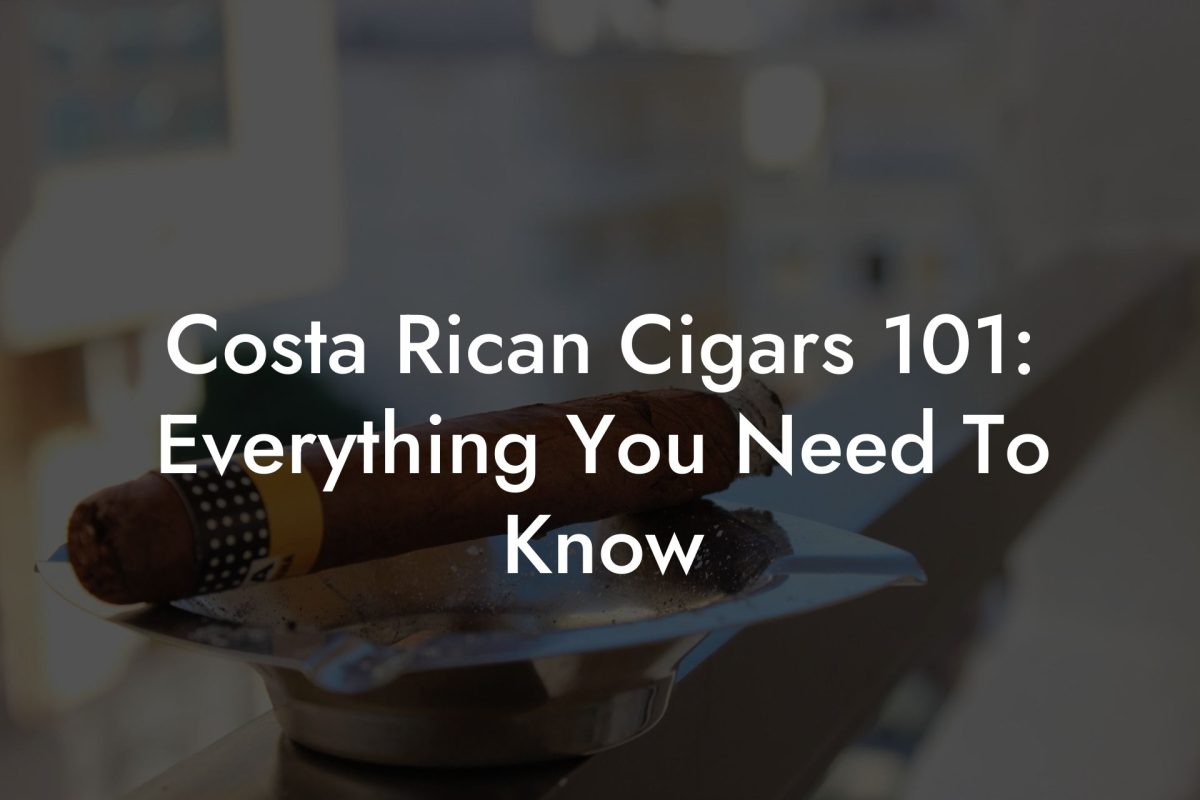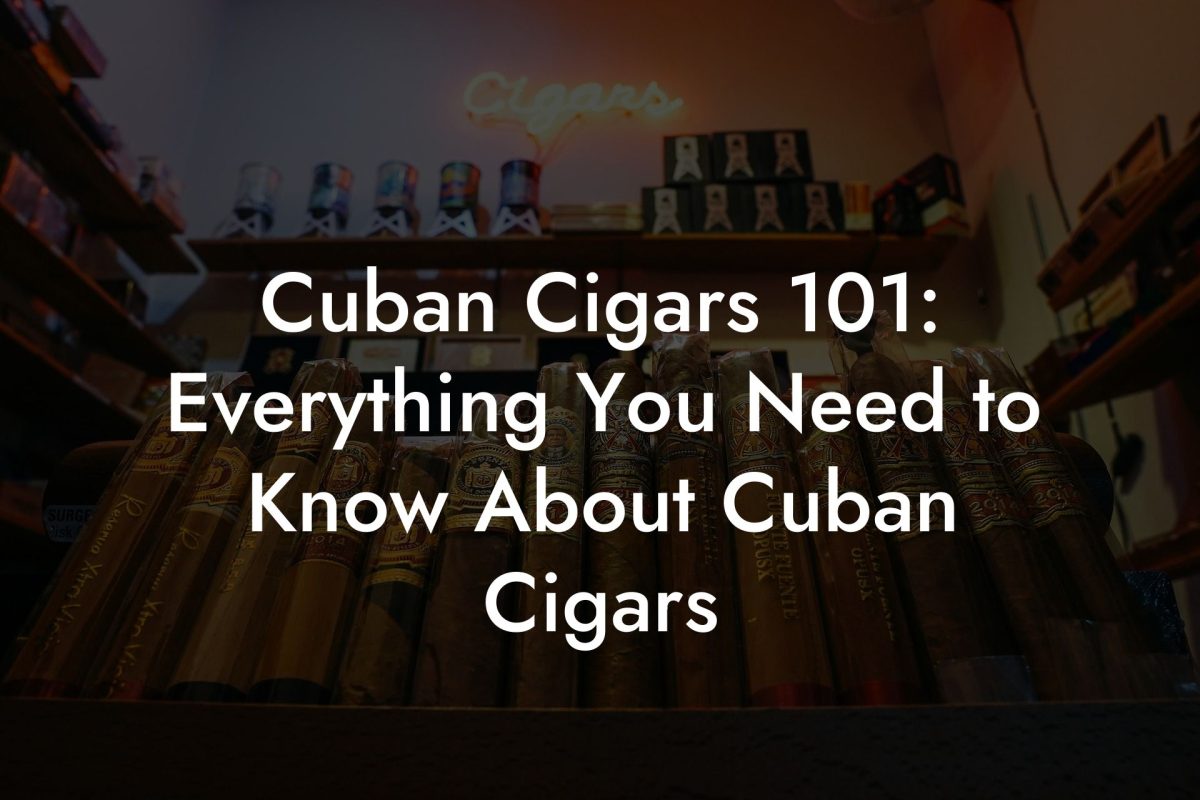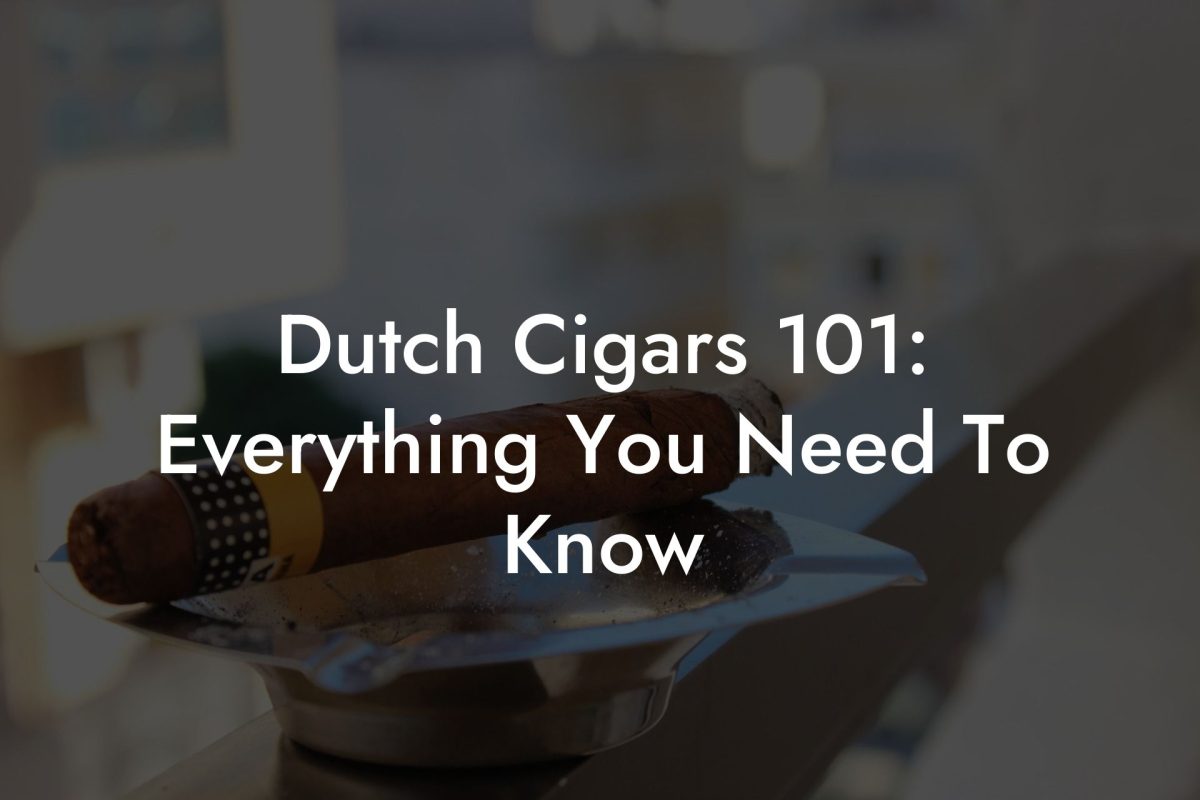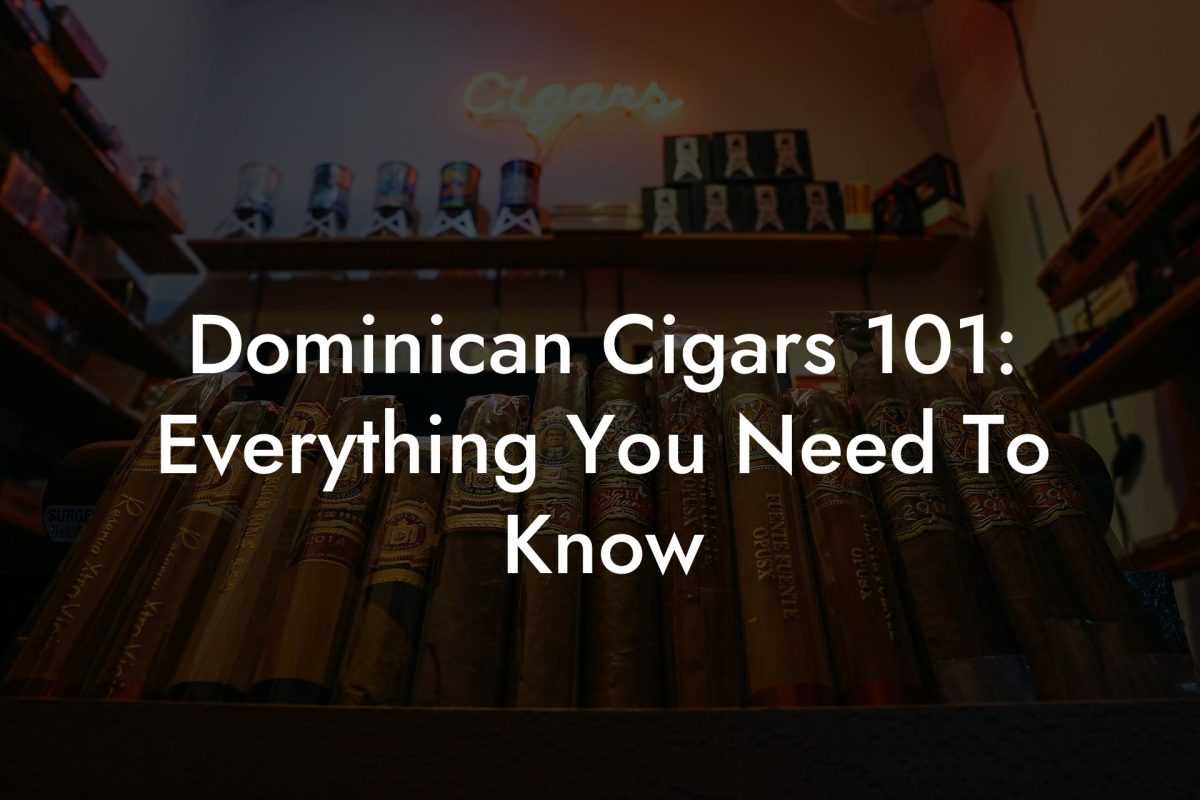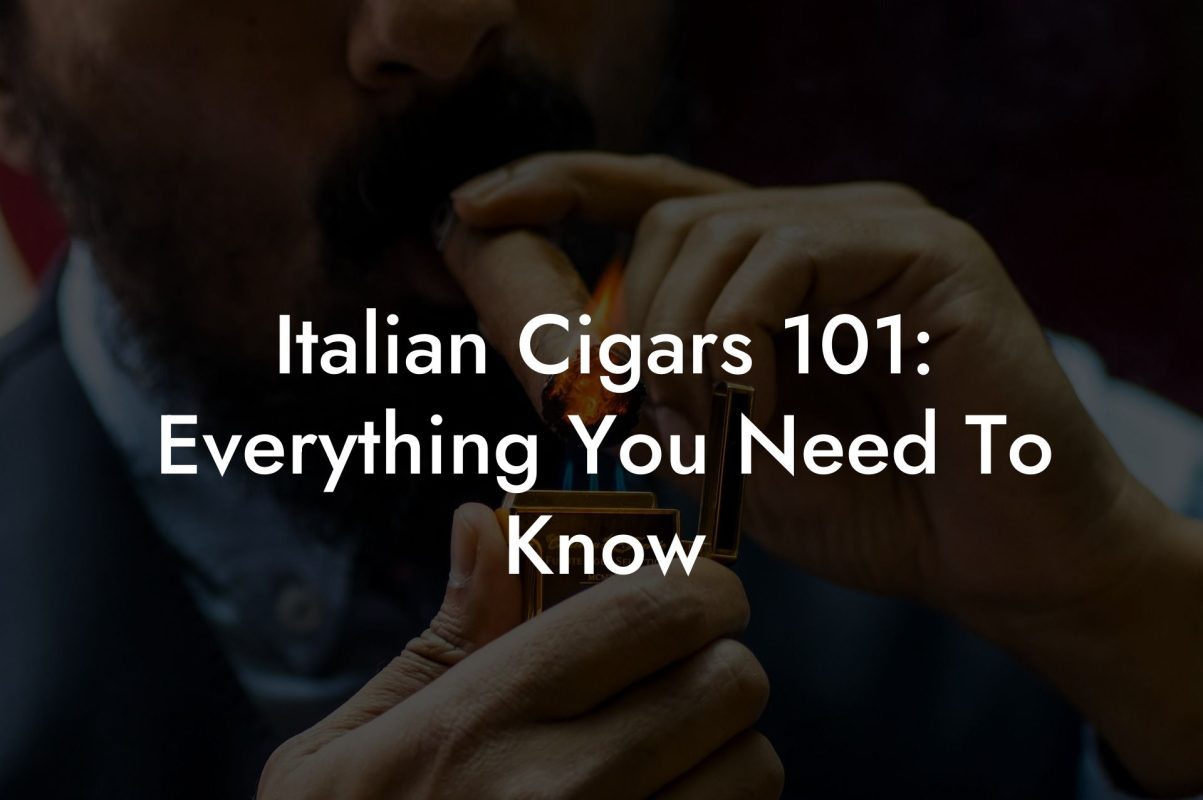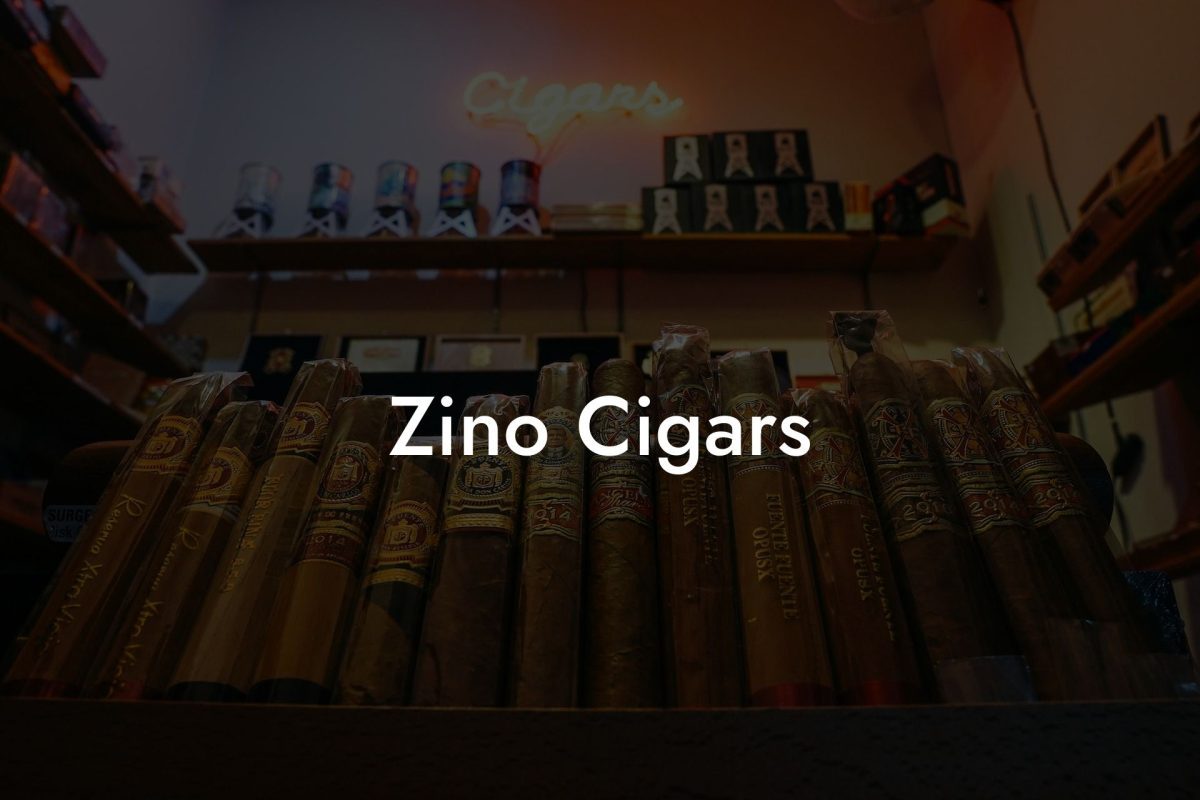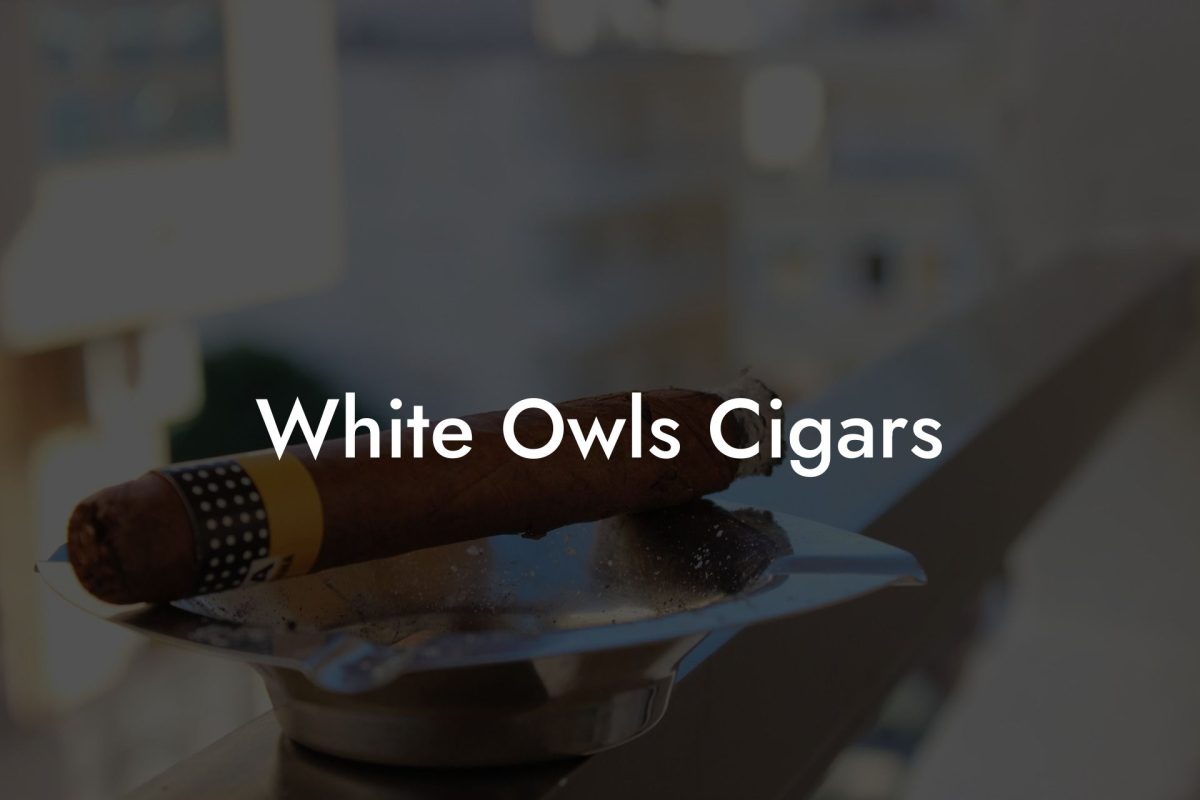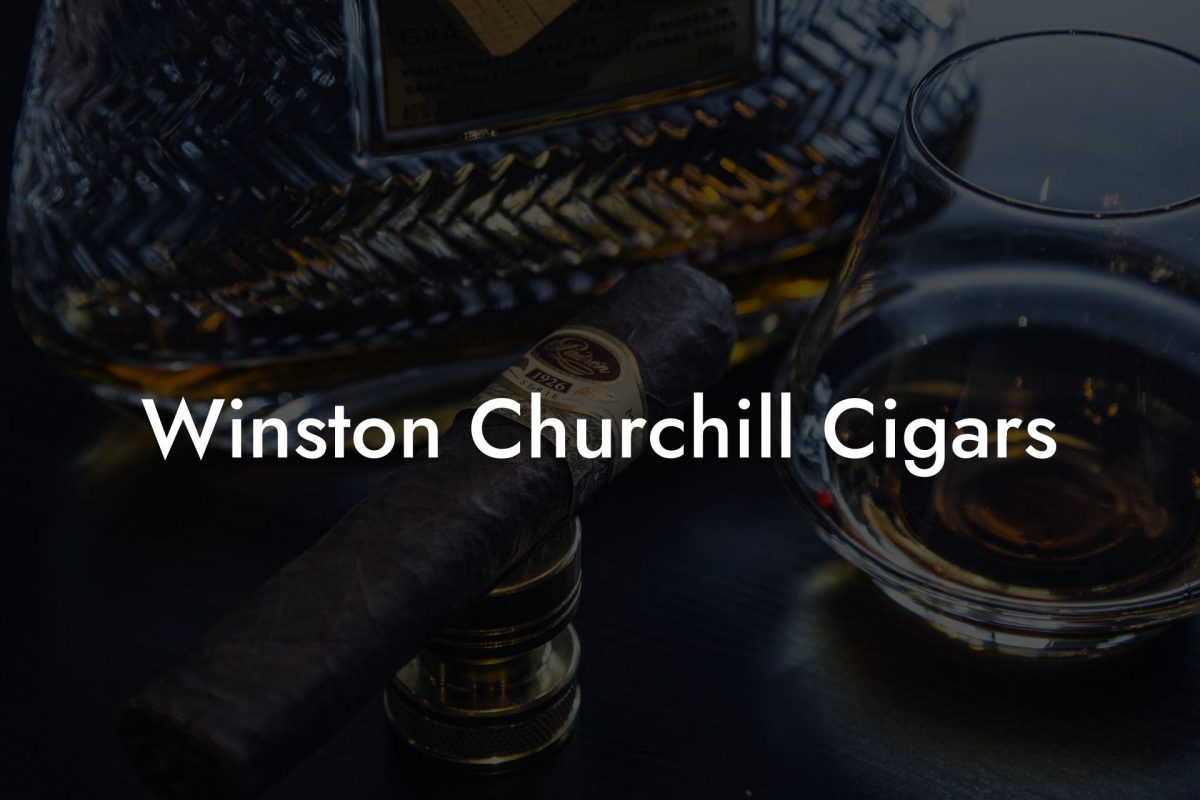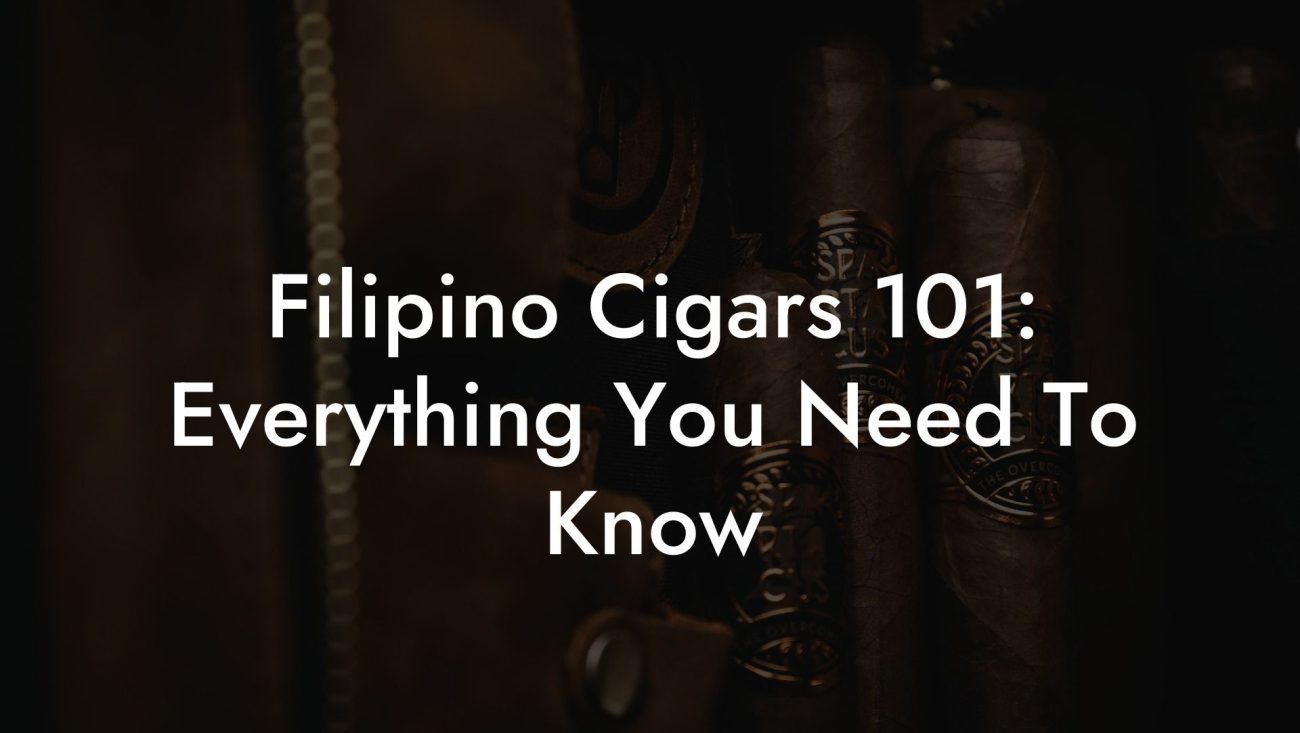Rolling through the annals of time and culture, cigars have evolved from a symbol of refined tradition to an emblem of modern flair, blending old-world craftsmanship with new-age rebellious charm. In today’s fast-paced, meme-filled era, cigars aren’t just for the silver screen icons of yesteryear, they’ve found a sweet spot among Gen-Z and millennials who crave experiences that are as rich and layered as the tobacco leaves themselves.
Cigars Table of Contents
The Story Behind Cigars: Tradition Meets Modern Vibes
The Art and Craft of Cigars: From Seed to Smoke
The Tobacco Journey: Understanding the Making of a Cigar
Savoring the Experience: Modern Tips and Techniques for Cigar Aficionados
Cigars and Culture: An Intersection of Heritage and Pop Trends
Exploring the Flavor Profile: What’s in Your Cigar?
Pairing Cigars with Lifestyle: Beyond Just the Smoke
Cigars and Social Responsibility: The Modern Approach to Enjoyment
Cigars in Pop Culture: Icons, Films, and the Digital Renaissance
Resources and Community Support: Your Next Steps in the Cigar Journey
Innovative Trends in the Cigar World: What’s Next?
Cigar Etiquette and Best Practices for the Modern Enthusiast
Mastering the Cigar Experience: A Guided Exploration
The Story Behind Cigars: Tradition Meets Modern Vibes
Cigars carry a legacy steeped in centuries of tradition. Originating in the lush, tropical regions of the Americas, these hand-rolled masterpieces began as a local indulgence and gradually captured the attention of royalty, revolutionaries, and rebels alike. Today, cigars are much more than dried tobacco wrapped in leaves, they are a symbol of culture, art, and even lifestyle rebellion.
In a world where digital trends often overshadow tangible experiences, savoring a cigar offers a unique, multisensory encounter. It’s about the anticipation as you cut the cap, the subtle aroma that tickles your nostrils, and the moment when the first puff releases a symphony of flavors. Whether you’re chilling at a rooftop party, watching your favorite series, or simply unwinding with friends, cigars have transcended their historical roots to become a cool ritual in contemporary settings.
The modern cigar enthusiast is not merely a passive consumer of smoke; they are connoisseurs who navigate the intricate interplay of tradition and modern artistry. They blend high-quality craftsmanship with personal expression, blending in social media influence and a do-it-yourself spirit into the timeless art of cigar smoking.
The Art and Craft of Cigars: From Seed to Smoke
Crafting a cigar is akin to composing a soulful symphony, where every note, from the rich aroma to the smooth draw, plays a pivotal role in the overall experience. The process is an art form, honed over generations, involving keen attention to detail and unparalleled passion for tobacco.
At its core, cigar making is about quality ingredients and masterful techniques. Select tobacco leaves are the heart and soul of every cigar, coming from specific regions around the globe that have perfected the art of growing and curing tobacco. The curing process, aging, and fermentation of tobacco are critical steps that help develop those deep, complex flavors that distinguish a fine cigar from the run-of-the-mill.
Master rollers, often revered as both artists and craftsmen, combine tradition with innovation. With precise hands and intuitive knowledge, they skillfully ferment, blend, and roll the tobacco to achieve that perfect balance of flavor, aroma, and draw. Their work is a testament to a legacy that marries scientific precision with a creative spirit.
The Tobacco Journey: Understanding the Making of a Cigar
The journey of a cigar begins long before it reaches your hands. It starts in the fertile fields of countries like Cuba, the Dominican Republic, Nicaragua, and Honduras, regions celebrated for producing some of the world’s best tobacco. Here’s a closer look at the multifaceted journey from leaf to luxury.
Tobacco Cultivation and Harvesting
Tobacco plants require a meticulous cultivation process, from seed germination to harvesting the mature leaves that are destined to become the building blocks of a great cigar. Farmers use traditional methods combined with modern agricultural practices to ensure that each leaf is rich in flavor and free of imperfections.
The harvesting process is both an art and a science. Leaves are picked at the optimal moment of maturity, ensuring that the balance of nicotine, oils, and essential flavor compounds is just right. This precision in timing is crucial, too early, and the leaves may lack depth; too late, and they might be overripe.
Curing, Fermentation, and Aging
Once harvested, tobacco leaves undergo a meticulous curing process. Traditionally, this involves air-curing under controlled environmental conditions. The leaves are then fermented, a natural process that intensifies their flavor and reduces harshness, transforming raw leaves into a smoother, refined product.
Aging further refines the tobacco. Just like fine wine, a well-aged cigar is a testament to patience and time. The aging process helps harmonize the flavors, enrich the aroma, and provide an overall smooth smoking experience, making each puff a luxurious indulgence in tradition and taste.
The Art of Rolling: Crafting the Perfect Cigar
After careful selection, curing, and aging, the tobacco leaves are ready to be transformed by master rollers. The process of rolling a cigar involves skillful manipulation of the leaves, layering them to create not only an aesthetically pleasing product but also one that burns evenly and delivers consistent flavor.
The construction of a cigar is crucial, it determines the draw, the burn rate, and the way flavors unfold from the first light to the last puff. Even slight imperfections in the roll can affect the experience, making the role of the master roller an indispensable part of cigar craftsmanship.
By combining artisanal tradition with cutting-edge techniques, modern cigar makers are able to create products that are both steeped in heritage and reflective of today’s dynamic lifestyle.
Savoring the Experience: Modern Tips and Techniques for Cigar Aficionados
Enjoying a cigar today is about more than just lighting one up, it’s a comprehensive experience that appeals to the aesthetic, the senses, and even the soul. For the modern cigar aficionado, the ritual is just as important as the smoke itself.
Whether you’re a seasoned smoker or a curious newcomer, there are a few insider tips to elevate your cigar experience:
- Cut It Right: Invest in a high-quality cutter. A clean, precise cut ensures that your cigar burns evenly without unraveling the wrapper.
- Take Your Time: A fine cigar isn’t a race. Slow down, savor each puff, and let the flavors evolve on your palate over time.
- Pair Smartly: Experiment with pairing your cigar with your favorite drinks. From craft cocktails to single malt whiskies, the right pairing can elevate flavors and create a memorable experience.
- Create the Ambiance: Lighting a cigar in a relaxed environment, be it a cozy lounge, a trendy rooftop bar, or even your own backyard garden, enhances its essence.
- Stay Informed: With the rise of digital platforms, modern smokers can discover cigar reviews, join online communities, and even learn about new techniques from influential bloggers and YouTubers.
These tips not only hone your technique but also deepen your appreciation for the art behind cigars. In a world where every experience counts, taking the time to properly enjoy each moment can transform an ordinary smoke into an extraordinary ritual.
Cigars and Culture: An Intersection of Heritage and Pop Trends
There’s a deep, almost cinematic interplay between cigars and culture. From iconic film scenes that immortalize a rugged hero with a cigar dangling from his lips to music videos that capture the swagger of modern lifestyles, cigars have a way of telling a story.
Today’s cultural narrative around cigars isn’t confined to any single genre or generation. In fact, cigars have managed to reinvent themselves as an emblem of sophistication and leisure that appeals to a diverse crowd. Millennials and Gen-Z, with their penchant for unique experiences and self-expression, are increasingly embracing cigars as a part of their curated lifestyle.
Social media has played a notable role in this evolution. Stunning visuals of cigar lounges, aesthetically pleasing smoke rings, and intimate gatherings have flooded platforms like Instagram and TikTok, sparking a renewed interest in traditional smoking practices with a modern twist. Influencers and lifestyle enthusiasts alike are celebrating the beauty of a well-crafted cigar, blending classic charm with a contemporary edge.
This cultural fusion is also evident in the growing number of cigar festivals, pop-up events, and exclusive lounges that cater specifically to a younger audience. These spaces bring together aficionados from diverse backgrounds, celebrating not only the cigars themselves but also the community and creativity they inspire.
Exploring the Flavor Profile: What’s in Your Cigar?
One of the most exhilarating aspects of cigar smoking is the exploration of its diverse flavor profiles. Much like wine or craft beer, cigars come in a spectrum of tastes that can range from earthy and spicy to sweet and aromatic. The flavor profile of a cigar is influenced by several factors, including the type of tobacco used, the region where it’s grown, and the specific curing and fermentation techniques employed.
For many modern enthusiasts, the journey of discovery is part of the attraction. Tasting sessions have become social events where experts share insights about the nuances of different blends, and newbies learn the art of differentiating between subtle flavor notes like cocoa, cedar, coffee, and even hints of tropical fruits.
Experimenting with different cigars is not only a sensory delight but also a fun, educational experience. Whether you’re comparing a full-bodied Nicaraguan robusto against a milder Dominican corona or exploring the spiciness of a Cuban classic, every cigar offers a unique narrative of its place of origin, craftsmanship, and the passion of its maker.
In the digital age, numerous apps and online communities allow you to record tasting notes, rate your experiences, and share recommendations with fellow cigar lovers. This interactive approach fosters a deeper connection to the art of smoking while helping aficionados refine their palates and expand their horizons.
Pairing Cigars with Lifestyle: Beyond Just the Smoke
For the modern consumer, cigars aren’t just an isolated indulgence; they are part of a holistic lifestyle. Enjoying a good cigar can effortlessly merge with your overall vibe, whether it’s a post-dinner ritual, a weekend wind-down, or a statement accessory at a social gathering.
Here’s how you can incorporate cigars into your lifestyle in creative, contemporary ways:
Cigar Lounges and Chill Spots
Picture cozy, ambient venues that combine urban art, craft cocktails, and curated music playlists. These lounges provide not just a place to smoke but a space to bond over shared interests. They are the new hangouts where networking meets unwinding, a modern twist on the classic cigar bar.
Event Experiences and Pop-up Festivals
Cigar festivals and exclusive pop-up events offer immersive experiences that celebrate the craft of cigar making with live demonstrations, tasting sessions, and expert talks. These gatherings are an excellent opportunity to mingle with like-minded enthusiasts, learn more about the intricacies of cigar production, and even score limited-edition releases.
Digital Communities and Social Media
In an age where memes reign and influencers shape trends, digital communities dedicated to cigars have bloomed. Online forums, Instagram pages, and TikTok channels share everything from expert reviews to fun behind-the-scenes looks into cigar production. This virtual camaraderie helps amplify the culture and introduces it to a broader, tech-savvy audience.
Integrating cigars into your lifestyle means blending tradition with personal identity. It’s about curating experiences and crafting moments that are as memorable and unique as the cigars you enjoy.
Cigars and Social Responsibility: The Modern Approach to Enjoyment
While cigars remain an emblem of luxury and leisure, the modern enthusiast cares about more than just taste and tradition, they’re also conscious of sustainability, ethical production, and health-conscious consumption. Brands and aficionados alike are increasingly focused on responsible practices that celebrate cigars without compromising values.
Many reputable cigar manufacturers now prioritize sustainable farming methods, fair trade practices, and eco-friendly packaging. This commitment not only ensures the highest quality tobacco but also supports communities and preserves the land for future generations. For the discerning modern smoker, knowing that their indulgence contributes to a positive cause adds another layer of satisfaction to the experience.
At the same time, wellness trends have inspired innovations like organic tobacco blends and low-nicotine options that cater to a health-conscious audience. These alternatives allow enthusiasts to enjoy the ritual of cigar smoking while maintaining balance in their lifestyle. The blend of tradition with a forward-thinking approach underscores the evolving narrative of cigars in the modern era.
Cigars in Pop Culture: Icons, Films, and the Digital Renaissance
From Hollywood blockbusters to viral social media challenges, cigars have made an indelible mark on pop culture. Think of the classic image of a rugged hero exhaling a perfectly formed smoke ring, or the suave gentleman in a tuxedo enjoying a celebratory smoke after sealing a big deal. These portrayals have turned cigars into symbols of sophistication, defiance, and unyielding cool.
In recent years, the digital space has played a huge role in reinventing the cigar narrative. Memes that celebrate the quirky side of cigar smoking, short-form videos showing off the artistry of cutting and lighting, and influencer-led tutorials have all contributed to a renaissance of cigar culture. This digital transformation has made the once exclusive world of cigars accessible, fun, and engaging for a global audience.
As pop culture continues to evolve, cigars remain a timeless accessory in the style arsenal of those who appreciate the finer things in life. They serve as a bridge between classic allure and contemporary cool, inviting a new generation to explore, celebrate, and redefine the essence of this enduring tradition.
Resources and Community Support: Your Next Steps in the Cigar Journey
Embarking on a cigar journey might feel like stepping into a world of mystique and complexity, but it’s also one filled with incredible communities, resources, and experiences that make the ride well worth it. Whether you’re searching for local cigar lounges, online groups that share tasting notes, or virtual meet-ups with seasoned connoisseurs, there’s a wealth of support waiting to welcome you.
Start by exploring reputable blogs, YouTube channels, and Instagram pages centered around cigar reviews and lifestyle tips. Many established cigar brands host interactive sessions, live Q&As, and virtual tours of their factories, offering you rare glimpses into the riveting world of cigar making.
Look out for community events such as cigar festivals, local tasting sessions, and pop-up lounges that give you the opportunity to meet fellow enthusiasts. These events are not only educational but also a fun way to network and share your experiences. Online forums and social media groups further bolster your journey, allowing you to learn, ask questions, exchange recommendations, and even review your favorite cigars with a supportive community.
Taking the next steps means embracing the full spectrum of what the cigar lifestyle offers, from cultivating your own taste profile to actively engaging in a community of like-minded individuals. Be curious, experiment, and, above all, enjoy the rich tradition and ever-evolving modern narrative of cigars.
Innovative Trends in the Cigar World: What’s Next?
As any true connoisseur knows, the world of cigars is never static. The industry is constantly evolving, with innovations that pay homage to tradition while also pioneering modern techniques designed to enhance the smoking experience.
One of the most exciting trends is the integration of technology. From sophisticated humidity control devices that ensure your humidor is always at peak performance to mobile apps that help track your tasting notes and even connect you with other enthusiasts, technology is reshaping how cigars are enjoyed and appreciated.
Sustainable production methods and eco-friendly packaging are also taking center stage, appealing to a generation that values environmental responsibility as much as quality. Many manufacturers are now sourcing tobacco from certified organic farms, reducing chemical dependencies and ensuring that every puff contributes to a better, greener tomorrow.
Customization is another trend on the rise. With limited edition blends, bespoke humidors, and even personalized engravings on cigar boxes, the industry is embracing individual expression. This allows aficionados to not only enjoy a recognizable standard but also to celebrate their unique tastes and interests.
The future of cigars is all about innovation balanced with reverence for tradition. These emerging trends reflect a larger shift towards a lifestyle that celebrates both quality and individuality, inviting a broader audience to explore, experiment, and ultimately, enjoy the multifaceted pleasures of cigar smoking.
Cigar Etiquette and Best Practices for the Modern Enthusiast
While there’s an undeniable allure to cigars, there’s also an art to enjoying them respectfully and responsibly. Modern cigar etiquette is about blending time-honored tradition with a relaxed approach that resonates with today’s lifestyle.
Here are some essential best practices to keep in mind:
- Respect the Ritual: Every cigar is a journey. Take your time to appreciate the aroma, the cut, the light, and the draw. Don’t rush the experience.
- Know Your Surroundings: Whether you’re in a cigar lounge or at a social gathering, be mindful of your fellow enthusiasts. Enjoy your smoke in designated areas and always dispose of your cigar butt responsibly.
- Share the Knowledge: The culture of cigars revolves around community. Don’t hesitate to engage in conversations, ask questions, and share your own experiences. Authenticity and passion are always welcome.
- Pair Thoughtfully: Experiment with food and drink pairings, but always complement rather than overpower the delicate balance of the cigar’s flavor profile.
- Keep it Clean: Maintain your cigar accessories, cutters, lighters, and humidors, in top condition. A well-maintained toolkit not only improves your experience but also shows respect for the craft.
Embrace these guidelines as a way to elevate your cigar game. Whether you’re hosting a tasting party or enjoying a quiet moment of introspection, proper etiquette ensures that every experience is as refined and enjoyable as the cigar itself.
Mastering the Cigar Experience: A Guided Exploration
Entering the world of cigars might seem overwhelming at first, given the deep history, complex production process, and vast array of choices available. The key is to start small, be curious, and let your taste buds pioneer the journey.
Begin by sampling a variety of cigars from different regions. Notice how the flavor, strength, and burn of a Cuban cigar differ from that of a Nicaraguan or Dominican blend. Utilize online resources, visit local cigar lounges, and even consider attending a beginner’s workshop. These experiences not only enhance your appreciation of the craft but also equip you with the insights to select cigars that perfectly match your evolving palette.
As you experiment, document your experiences. Jot down tasting notes, pairings that worked wonders, and even the ambiance that enhanced your overall mood. Over time, this personal record becomes an invaluable guide to charting your cigar journey. The more you explore, the more you’ll discover nuanced flavors, hidden notes, and unexpected delights that each cigar offers.
Don’t be afraid to ask for recommendations. Whether it’s a store clerk at a specialty tobacconist or an active member in an online forum, tapping into the collective wisdom of the community is one of the best ways to refine your journey. As the cigar culture continues to evolve, every shared experience adds to the vibrant tapestry of what it means to truly be a modern cigar enthusiast.
Remember, your journey is uniquely yours, filled with experimentation, discovery, and moments of indulgence. Embrace every twist and turn along the way, just as you would savor the complexity of a finely crafted cigar.
Frequently Asked Questions About Cigars
Below are some of the most common questions about cigars, their production, and how to enjoy them. Whether you're a curious newcomer or a seasoned aficionado, these FAQs shed light on the timeless appeal of cigars.
1. What makes cigars different from regular cigarettes?
Cigars are composed of whole tobacco leaves that are fermented and aged, resulting in a richer, more complex flavor profile compared to regular cigarettes. They are handmade and intended to be savored slowly, allowing you to enjoy a full sensory experience.
2. How should I properly store my cigars?
Maintaining the right humidity and temperature is essential for preserving the quality of your cigars. Using a well-calibrated humidor, typically set at 65-70% humidity and around 70°F, ensures your cigars remain fresh and flavorful.
3. Do cigars have an expiration date?
Properly stored cigars can age beautifully for many years. In fact, some aficionados purposely age cigars to further develop their flavor; however, exposure to improper conditions can degrade quality, so storage is key.
4. What is the best way to cut a cigar?
Always use a sharp, high-quality cutter for a clean cut. The ideal cut should create an open cap that allows for an optimal draw without damaging the cigar’s wrapper.
5. Can I enjoy cigars as a complete beginner?
Absolutely! The cigar world is welcoming to newcomers. Start with milder blends, visit cigar lounges, and engage with online communities and tasting events to learn and build your confidence over time.
6. What are some popular drink pairings for cigars?
Popular pairings include single malt whiskies, craft cocktails, rich coffees, and even dark chocolates. The best pairing often depends on the flavor profile of your cigar and your personal taste.
7. Are there any health concerns with cigar smoking?
As with any tobacco product, moderation is key. Cigars are generally enjoyed in a more relaxed, less frequent manner compared to cigarettes; however, it's important to be aware of potential health risks and to enjoy responsibly.
8. How can I learn more about cigars and join the community?
Engage with local cigar lounges, join online forums, follow expert reviews, and attend cigar events. These resources provide valuable insights and an opportunity to connect with like-minded enthusiasts.
Your Journey Into the World of Cigars
Stepping into the realm of cigars is an invitation to explore a rich tapestry of art, culture, and innovation. Each cigar tells a story, the story of an ancient craft, nurtured through generations, and reimagined for today’s discerning enthusiast. At its core, the cigar is more than just a tobacco product; it is a celebration of heritage, craftsmanship, and the simple pleasure of life.
Whether you’re lighting up a perfectly rolled gem in a smoky lounge, hosting an intimate tasting with friends, or scrolling through Instagram for the latest cigar trends, every moment is infused with a sense of history and modernity. The world of cigars is as diverse as it is dynamic, a space where tradition meets technology, classic techniques blend with modern innovations, and every puff carries whispers of the past alongside the promise of the future.
So take that leap, be bold, and explore the rich nuances of cigar culture. Your journey is a continuous adventure, from mastering the perfect cut to discovering new flavor profiles and connecting with a community that’s as passionate about cigars as you are. Embrace the art, culture, and lifestyle that cigars have to offer, and let each moment enhance your personal narrative.
From timeless traditions to digital transformations, cigars invite you to savor every moment and create memories that are as enduring and layered as the cigar itself. Enjoy the ride, relish the experience, and let each draw remind you that, in life, every puff counts.

